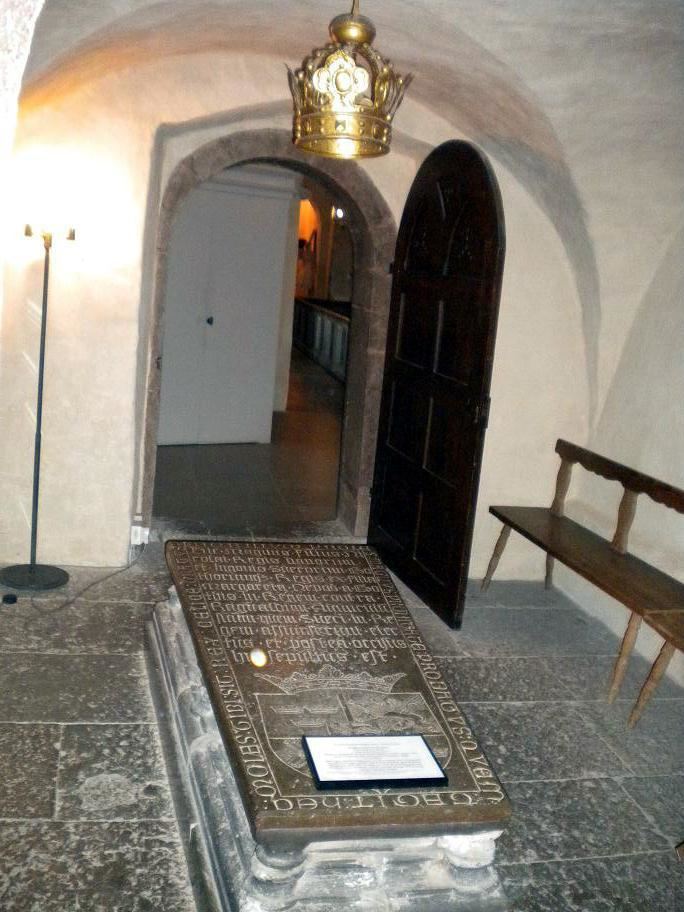Name Magnus of Children Canute V of Denmark | Died June 4, 1134, Scania Role Ruler | |
 | ||
Spouse Richeza of Poland, Queen of Sweden (m. 1129) Parents Niels, King of Denmark, Margaret Fredkulla Similar People Inge the Elder, Eric the Victorious, Sweyn II of Denmark, Sophia of Minsk, Boleslaw III Wrymouth | ||
Grandchildren Valdemar of Denmark | ||
Magnus I (Swedish: Magnus Nilsson; Danish: Magnus Nielsen) (born about 1106, died 4 June 1134 in the Battle of Fotevik), was a Danish duke who ruled Gothenland in southern Sweden from the 1120s to c. 1132. His status as ruler of Sweden was disputed in his own time, but today he is recognized as one of the historical Swedish monarchs. Snorri Sturlason gives him the epithet Magnus the Strong.
Contents
Youth and appearance
Magnus was the son of King Niels I of Denmark and Margaret Fredkulla, the second or eldest daughter of King Inge the Elder of Sweden. His elder brother Inge was killed in a riding accident, leaving Magnus as the sole heir to Niels. He grew up to be a tall and strong young man, a head taller than anyone else. The chronicles give different opinions about his character, depending on their political preferences. The near-contemporary Roskilde Chronicle calls him merry and generous and a "lover of firmness in character". Saxo Grammaticus, on the other hand, says that he was well endowed by nature but still a violent brute.
The road to kingship
When Margaret's first cousin King Inge the Younger died at an unknown time in the 1120s, Magnus claimed the throne as the eldest grandson of Inge the Elder. According to the chronicler Saxo Grammaticus, Magnus was recognized by the Geats (Götarna) of Gothenland, but according to the Westrogothic law, the prerogatives of selecting a king lay with the Svear, another tribe to the north of the Geats. The Svear, on their part, had selected Ragnvald Knaphövde, whose saga was however short. According to the brief chronicle incorporated in the Westrogothic law, Ragnvald showed disrespect towards the Geats by not giving hostages when riding his tour of installation. In retaliation, Ragnvald was murdered by the Geatish population, an event sometimes dated to c. 1129. "At his death", according to Saxo, "power was transferred to Magnus". Magnus is not mentioned as King in the Westrogothic law, nor in any Swedish king-list, leaving a question-mark around his actual sphere of power. The law-speaker of Västergötland, Karl of Edsvära, governed his province around this time and is occasionally known in the sources as jarl or even "king".
Reign
The few sources from this period indicate that Christianity was still not implemented everywhere. The Bishop of Uppsala, Siwardus, was appointed by the Archbishop of Hamburg-Bremen in 1123, but forced to flee "by pagans" in 1130. Another bishop, Henry, was then appointed in Sigtuna by the Danish Archbishop Asser, and appears as a strong supporter of Magnus. The alterations also indicate the clerical rivalry between Hamburg-Bremen and the Danish archbishopric. There is also a story in Saxo's chronicle that Magnus at one time undertook a belated Viking expedition to a part of Sweden, and brought back a few heavy Thor's Hammers which he had robbed on a holy island. The still insufficiently Christianized Swedes henceforth saw him as a temple defiler who had robbed the gods.
Around 1127, Magnus married Richeza, daughter of Boleslaw III of Poland. The couple had two sons, Knud (who would become Canute V, born 1129) and Niels (born 1130). In 1130, Magnus backed Boleslaw III in conquering Rügen. The Polish forces together with a Danish fleet compelled the Rani to recognize Polish rule over the island.
Civil war in Denmark
In 1131, Magnus had his cousin and potential rival for the Danish throne, Canute Lavard, murdered, in order to position himself as heir presumptive to his father King Niels. After this deed he had to return to Gothenland, where he was still recognised as king. Though he was eventually backed by Niels, Magnus found himself in a civil war against Lavard's half-brother Eric Emune. The civil war weakened Magnus's position in Sweden. The Swedes chose a landowner from Östergötland, Sverker I, to be their king. According to Saxo's chronology of events this happened around 1132.
Magnus and his father Niels eventually engaged the enemy in the Battle of Fotevik in Scania on 4 June 1134. According to Saxo, Niels panicked and fled when Eric approached, but Magnus confronted his adversaries with a small troop of determined followers. "He preferred death to escape in order not to eclipse his old reputation for courage. Finally, when he had fought rashly and killed many enemies, he fell over the heap of corpses that had piled up around him." After the decisive defeat, Niels escaped with his ships but was killed later the same year.
Legacy
After Magnus's death, his widow Richeza returned to the other side of the Baltic Sea where she married Volodar of Minsk, a Rurikid ruler of Viking origins. She later returned to Sweden and thirdly married the man who defeated Magnus, King Sverker I.
Magnus's son, Canute V, contested the Danish throne with his second cousin, Svend III. When Canute died in 1157, Magnus's legitimate descent became extinct. Canute's elder son Niels, born by his wife Helena of Sweden, died in 1180. Canute's illegitimate posthumous son, Valdemar, bishop of Schleswig and Prince-Archbishop of Bremen, died in 1236 as the last descendant of king Magnus.
